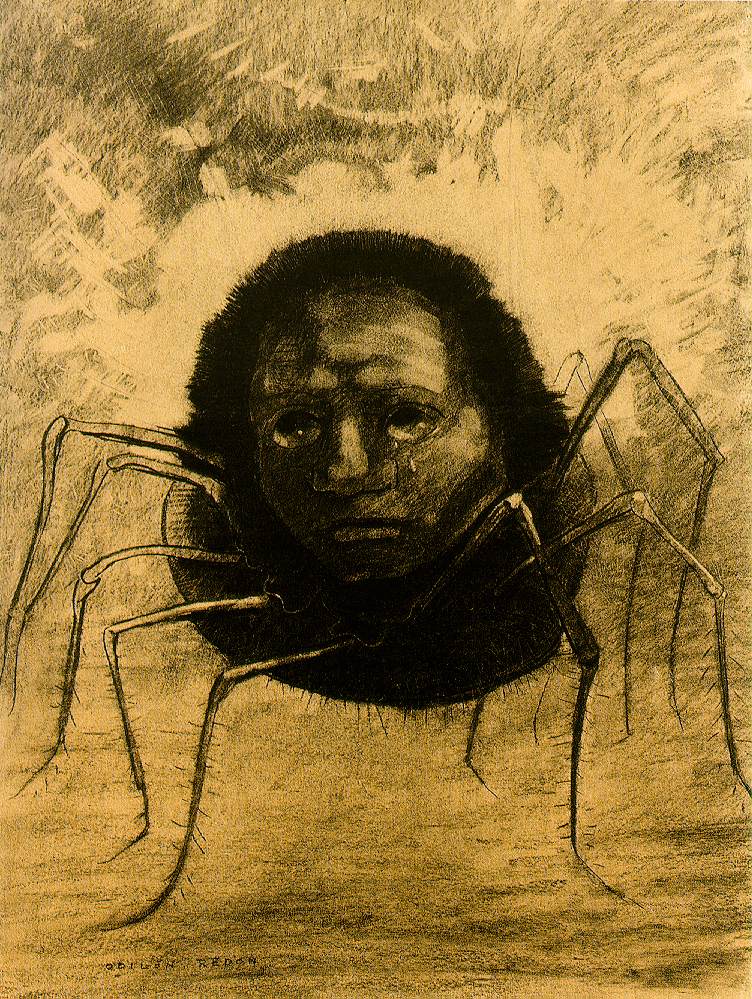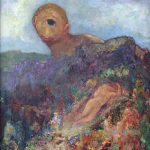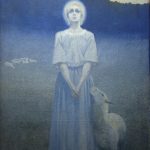
In the realm of art, where imagination dances with form, Odilon Redon stands as a luminary of symbolism and surrealism. Among his captivating creations, the “Crying Spider” emerges as a masterpiece that weaves a delicate yet enigmatic narrative. Redon, a French symbolist painter active in the late 19th and early 20th centuries, transcended traditional boundaries to evoke emotion and introspection. As we delve into the world of the “Crying Spider,” we unravel threads of symbolism, explore the artist’s visionary approach, and contemplate the timeless allure of this arachnid enigma.
Odilon Redon: A Maestro of Symbolism
Born in Bordeaux in 1840, Odilon Redon’s artistic journey unfolded during a transformative period in the art world. His early works primarily focused on traditional mediums, but a profound shift occurred after a series of visionary experiences and encounters with the symbolic works of the avant-garde. This marked the genesis of Redon’s exploration into symbolism, a movement that sought to convey abstract ideas and emotions through visual metaphors.
Redon’s artistic evolution led him to embrace the mysterious and the fantastical. His imagery often traversed the boundaries between dreams and reality, creating a dreamscape where the subconscious found expression. The “Crying Spider,” created in 1881, epitomizes Redon’s departure from the mundane and his foray into the metaphysical.
The Enigmatic “Crying Spider” Unveiled
In Redon’s “Crying Spider,” the viewer is confronted with a surreal arachnid suspended against an otherworldly backdrop. The spider, an arachnid associated with both fear and fascination, transcends its earthly form in Redon’s hands. Its tears, depicted as crystalline droplets, evoke a poignant sense of emotion that transcends the natural realm.
The use of symbolism in Redon’s spider is multi-layered. Traditionally, spiders symbolize creativity, patience, and the intricate weaving of fate. In the context of the “Crying Spider,” Redon introduces an element of vulnerability and sorrow. The tears streaming from the spider’s eyes add a human-like quality, inviting viewers to contemplate the emotional depth within this creature of the imagination.
Redon’s Visionary Symbolism: Beyond the Literal
To fully grasp the essence of the “Crying Spider,” one must appreciate Redon’s approach to symbolism. Unlike some artists who adhere to literal representations, Redon’s symbolism transcends the confines of direct interpretation. Each element in his works exists in a realm where subjective meaning intertwines with universal archetypes.
In the “Crying Spider,” Redon invites viewers to explore their own emotions and perceptions. The tears of the spider may evoke empathy, sorrow, or curiosity. The ethereal background against which the spider is set contributes to the dreamlike quality, blurring the boundaries between reality and the fantastical. Redon’s symbolic language is a call to introspection, beckoning viewers to decipher the enigma through their own emotional lens.
Surrealism and the Unconscious Mind
Redon’s exploration of symbolism aligns with the burgeoning surrealist movement that would gain prominence in the 20th century. The surrealists, inspired by the theories of Sigmund Freud, delved into the realm of the unconscious mind, seeking to unveil hidden desires, fears, and fantasies. Redon, a precursor to surrealism, laid the groundwork for artists who would later embark on journeys into the recesses of the psyche.
The “Crying Spider” can be seen as a bridge between symbolism and surrealism. While rooted in the symbolic tradition, Redon’s spider introduces an emotional depth that resonates with the surrealist fascination with the irrational and the unconscious. The tears of the spider become a conduit to the emotional landscapes within the human psyche, transcending the limitations of the literal world.
Legacy and Influence of the “Crying Spider”
Redon’s “Crying Spider” has left an indelible mark on the annals of art history. Its influence extends beyond the canvas, inspiring subsequent generations of artists and thinkers. The emotional resonance of the spider, suspended in its own dreamscape, captivates the imagination and prompts contemplation on the human condition.
Surrealist artists, including Salvador Dalí and René Magritte, drew inspiration from Redon’s symbolic explorations. The introspective and emotive qualities of the “Crying Spider” laid the groundwork for the surrealist fascination with the subconscious and the symbolic potential of everyday objects.
In contemporary art, echoes of Redon’s visionary approach reverberate. Artists continue to explore symbolism and surrealism, embracing the liberating power of the imagination. The “Crying Spider” stands as a testament to the enduring allure of art that transcends the confines of the tangible, inviting viewers to embark on a journey into the depths of the human experience.
In Conclusion: A Tapestry of Emotion and Symbolism
Odilon Redon’s “Crying Spider” emerges as a tapestry woven with threads of emotion, symbolism, and surreal intrigue. The arachnid, suspended in its dreamscape, transcends the boundaries of the literal to evoke a visceral response from the viewer. Redon’s mastery lies not only in his technical prowess but in his ability to harness the symbolic language to plumb the depths of human consciousness.
As we gaze upon the “Crying Spider,” we are invited to traverse the delicate strands of symbolism that connect the known and the unknown. Redon’s legacy endures as a beacon for those who seek to explore the realms of imagination, emotion, and the enigmatic beauty that resides at the intersection of dreams and reality.





